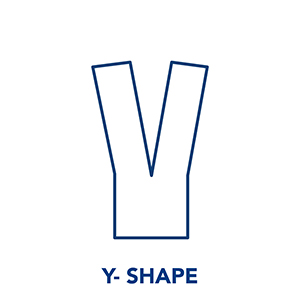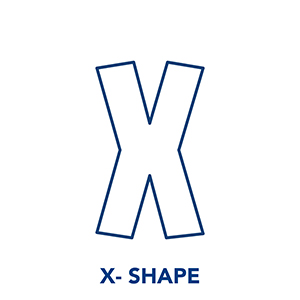What is Kinesiology Tape?
Kinesiology tape was developed by Japanese chiropractor and acupuncturist Dr. Kenzo Kase in 1979. Motivated by the fact that standard taping and strapping methods often seemed to hinder rather than help the healing process, Kase wanted to improve circulation within an injured muscle by creating a tape which mimicked the effects of the manual therapies he used on a daily basis.
After Japanese athletes at the 1988 Seoul Olympics provided it with a worldwide platform, kinesiology tape found its way to Europe in 1996, having been introduced to the USA a year previously.

If it is applied in the correct manner, kinesiology tape provides a “lifting” effect by pulling the upper layers of the skin. The space subsequently created between the layer of tissue underneath the skin and the muscle itself allows a release of pressure on the muscle. This not only enables easier blood circulation and a reduction in inflammation, but the pressure on the pain receptors is also relieved. As the elasticity of the tape acts as a second skin, the support it provides to the muscles help them contract back.
Kinesiology tape also helps remove lactic acid, a by-product of exercise created when energy is produced faster than the body can deliver oxygen.
As a build-up of lactic acid on your muscles makes you more susceptible to fatigue, cramping and DOMS (delayed onset muscle soreness), applying kinesiology tape can help avoid that after a particularly intense workout.
For painful joints, applying kinesiology tape can help stabilise them as well as treat the surrounding muscles, while decreasing the stress on problematic ligaments and tendons can also be achieved with the tape.

Remember, pain is your body’s way of letting you know that something is wrong. Kinesiology tape will reduce the pain, but if there is an underlying problem, it’s best to get that checked out instead of heaping on the tape and hoping for the best.
So while it should not be used as an alternative to seeing a physio or going through proper rehabilitation and recovery following injury, kinesiology tape is a good option if you are trying to nurse a sprain or minor injury in order to reduce discomfort and swelling.
The colour of the tape doesn’t dictate its function or purpose, either – so choose your favourite design and get taping!

Before we go, let’s run through some typical K Tape shapes you might apply or see in the future.
The I

A standard strip of tape with no cuts or alterations. Kinesiology tape is generally manufactured in a role of I strips. Particularly effective when applied to injured muscles.
The Y

A strip of I tape which has been cut down the middle to produce two ‘tails’, but still remains attached at the end.
The W

A strip of I tape which has been cut into a series of tails, which are also all still attached at one end. The ‘W’ label suggest four tails, but in reality it can be as many as necessary, meaning it is often known as the ‘fan’.
The X

A strip of I tape, cut down the centre from both ends but not all the way through. This makes four tails which stay joined together from a base in the middle of the tape, rather than at the end like the Y and the W strips. Particularly useful for areas of the body with a large surface area made up of different muscles, such as the back.
The Doughnut
Achieved by taking a strip of I tape, folding it in half and cutting down the folded centre instead of from the ends. When unfolded, there will be a large ‘hole’ in the middle yet the ends are all still joined – like a donut. This technique is often seen on the knee, when the kneecap occupies the donut’s hole and the donut’s sides are taped around it.



